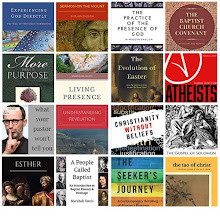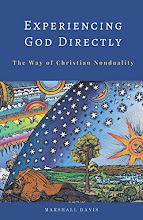Many Christians focus on the literal meaning of scripture. They
insist that everything that the Bible says must be taken literally, including
matters of history and science. This is the approach of fundamentalist and
evangelical forms of Christianity. Their stand for “biblical inerrancy” has them
down the dead end of rejecting the findings of natural and historical sciences.
These Christians fight lost causes, such as a literal six-day creation and a
worldwide flood.
Others see the Bible as a textbook of theological truth,
which can be condensed into creeds and confessions of faith. For these folks religion is chiefly about
doctrine – believing the right things. Using a list of essential doctrines (“the
fundamentals”) as their standard, they draw sharp lines between true believers
and unbelievers, orthodoxy and heresy, the saved and the lost. It is a
dualistic approach.
A third layer of interpretation focuses on the ethical
application of scripture. Scripture is understood to be a sourcebook for
morality. Christianity is about doing the right things. The religious life is
understood to be primarily an ethical life. These believers see the spiritual
life in terms of divine commands, laws, and moral principles. This moralistic approach
leads them to see a world divided between good and evil, right and wrong,
saints and sinners.
These first three layers of meaning are not mutually
exclusive paths. Often the literal, theological and ethical approaches are
combined into unique religious systems that define themselves in terms of carefully
prescribed orthodoxy and orthopraxy. This has given birth to a myriad of
religions, sects and denominations, each believing they alone have a “biblical
worldview” and do God’s will.
There is a fourth way. Throughout history there have been
mystics in all faith traditions who have seen a Way that transcends worldviews,
beliefs, and ethics. They see a deeper meaning in Scripture. For them Scripture
points beyond itself to its Source. Words are windows to the Word. The Bible is
more about the Author than the autographs. Scripture bears the scent of Heaven
and opens a door beyond human understanding.
This Way sees worldviews as cultural constructs. It sees
doctrines as creations of the human mind. Morality is seen as more than obeying
laws and applying principles. It goes beyond a relationship with God to know the
intimacy of union with the Divine. It embraces dualities as parts of a greater
unity. It is not about drawing lines, but abiding in the center of an ever-expanding
circle with no circumference.
This mystical Way is direct awareness of the One for which
all religions and spiritualties strive. It is intuitive rather than emotional
or intellectual. It is experiential, yet it is not itself an experience. It is apprehension
of God beyond theism, philosophy or religion.
The Tao Te Ching calls it the Tao, normally translated “the
Way.” That phrase is also what that early followers of Christ called the
Christian movement, according to the Acts of the Apostles. Confucius called it the Way of Heaven. The
author of the Gospel of John called it the Logos. Jesus called it the Kingdom
of God, the Kingdom of Heaven, or simply “the Father.”
This Spiritual Reality was Jesus’ sole message. According to
the Gospels most of Christ’s followers did not understand what he was saying. Consequently
after Jesus’ death the Church quickly exchanged the message of Jesus for a message about Jesus. Thus began Christianity’s rapid
downward spiral into secondhand religion.
This Eternal Way is at the heart of all Scriptures. Not just
the holy texts of my own faith tradition but all religious traditions. Huxley
called it the Perennial Philosophy, but it is not a philosophy. It is not a religion,
but all spiritual practices seek it. It is not a theological system, but all
doctrines point to it – some better than others. This Way is at the heart of
the Scriptures. It is why I love the Bible.














